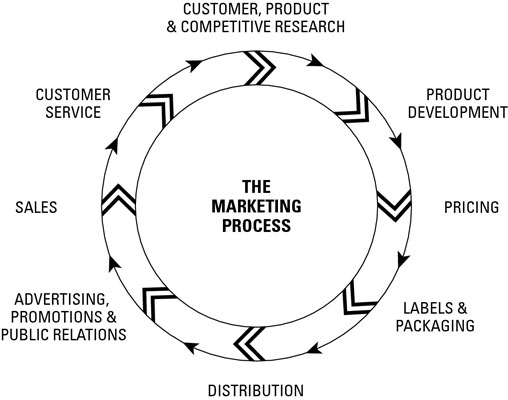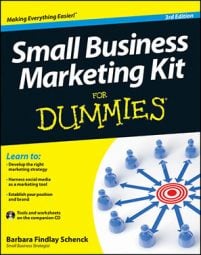An effective marketing strategy for a small business or startup follows the same basic marketing cycle as a big business, but for the small business marketer, the similarities stop there. Budgets, staffing, creative approaches, and communication techniques vary hugely between an international mega-marketer like, say, Coca-Cola, and a comparatively micro-budget marketer like, well, you.

Dollar differences in small business marketing
As a small business marketer, you already know one difference between your marketing program and those of the corporate behemoths that loom over you in all directions: The big guys have the big budgets.
They talk about a couple hundred thousand dollars as a discretionary line-item issue. You talk about a couple hundred dollars as an amount worthy of careful consideration. So any marketing advice you decide to follow needs to be scaled to your budget, and not to the million-dollar jackpots big businesses use as their marketing budgets.
Staffing differences for small business marketers
Look at the organization chart of any major corporation. Nearly always, you find a marketing vice president. Under that position you see a bunch of other professionals, including advertising directors, sales managers, online and social-media marketing managers, research directors, customer service specialists, and so on.
In contrast, strong small businesses blend marketing with the leadership function. The small business organization chart often puts responsibility for marketing in the very top box, the one with the owner’s name, which likely puts you in the essential role of overseeing marketing as a hands-on task.
Creative differences between small and big business marketing
The top-name marketers routinely spend six figures to create ads with the sole purpose of building name recognition and market preference for their brands, often without a single word about a specific product or price.
Small businesses take a dramatically different approach. They want to develop name recognition just like the biggest advertisers, but their ads have to do double duty. You know firsthand that each and every small business marketing investment has to deliver immediate and measurable market action.
Each effort has to stir enough purchasing activity to offset the marketing cost involved. The balancing act is to create marketing communications that build a clear brand identity while also inspiring the necessary consumer action to deliver inquiries, generate leads, and prompt sales — now.

